Josh Levenberg
TensorFlow Eager: A Multi-Stage, Python-Embedded DSL for Machine Learning
Feb 27, 2019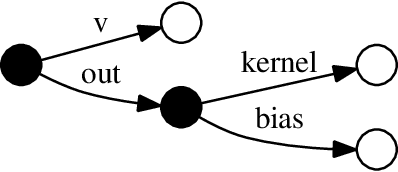

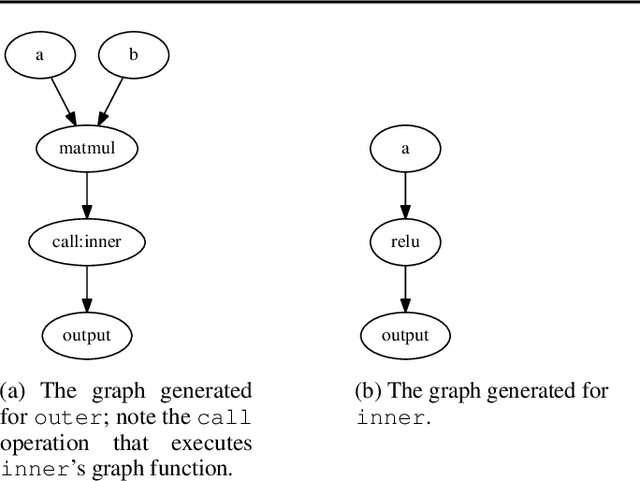
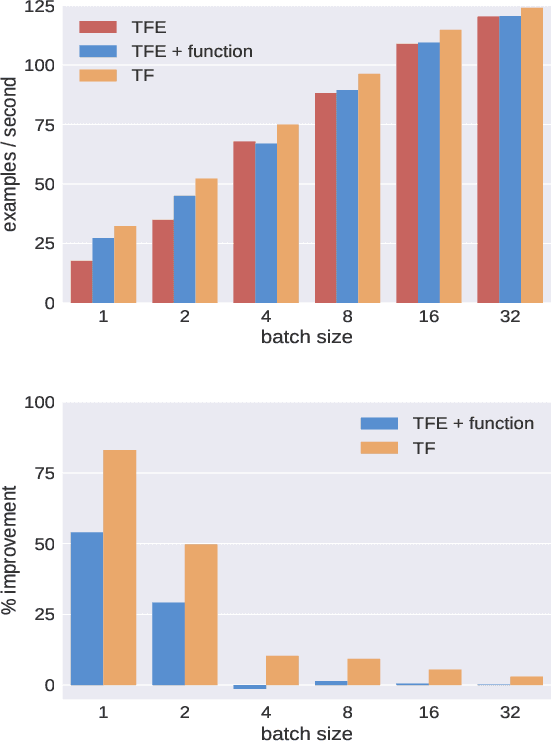
Abstract:TensorFlow Eager is a multi-stage, Python-embedded domain-specific language for hardware-accelerated machine learning, suitable for both interactive research and production. TensorFlow, which TensorFlow Eager extends, requires users to represent computations as dataflow graphs; this permits compiler optimizations and simplifies deployment but hinders rapid prototyping and run-time dynamism. TensorFlow Eager eliminates these usability costs without sacrificing the benefits furnished by graphs: It provides an imperative front-end to TensorFlow that executes operations immediately and a JIT tracer that translates Python functions composed of TensorFlow operations into executable dataflow graphs. TensorFlow Eager thus offers a multi-stage programming model that makes it easy to interpolate between imperative and staged execution in a single package.
TensorFlow: A system for large-scale machine learning
May 31, 2016

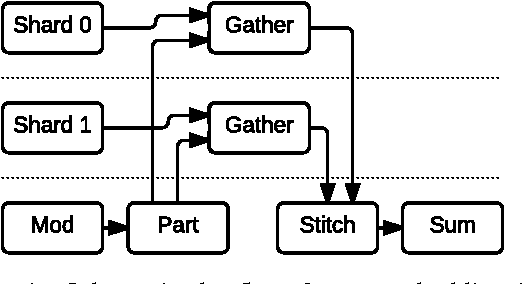

Abstract:TensorFlow is a machine learning system that operates at large scale and in heterogeneous environments. TensorFlow uses dataflow graphs to represent computation, shared state, and the operations that mutate that state. It maps the nodes of a dataflow graph across many machines in a cluster, and within a machine across multiple computational devices, including multicore CPUs, general-purpose GPUs, and custom designed ASICs known as Tensor Processing Units (TPUs). This architecture gives flexibility to the application developer: whereas in previous "parameter server" designs the management of shared state is built into the system, TensorFlow enables developers to experiment with novel optimizations and training algorithms. TensorFlow supports a variety of applications, with particularly strong support for training and inference on deep neural networks. Several Google services use TensorFlow in production, we have released it as an open-source project, and it has become widely used for machine learning research. In this paper, we describe the TensorFlow dataflow model in contrast to existing systems, and demonstrate the compelling performance that TensorFlow achieves for several real-world applications.
TensorFlow: Large-Scale Machine Learning on Heterogeneous Distributed Systems
Mar 16, 2016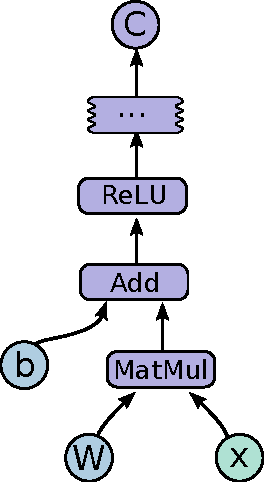

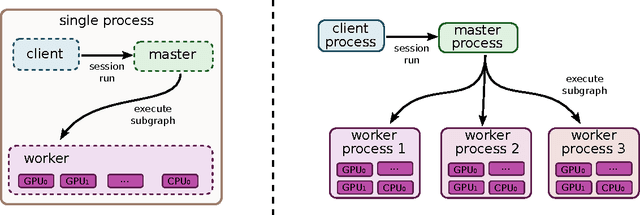
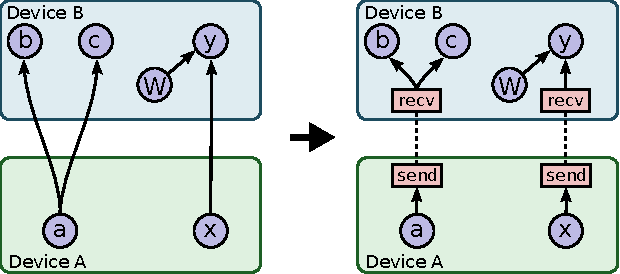
Abstract:TensorFlow is an interface for expressing machine learning algorithms, and an implementation for executing such algorithms. A computation expressed using TensorFlow can be executed with little or no change on a wide variety of heterogeneous systems, ranging from mobile devices such as phones and tablets up to large-scale distributed systems of hundreds of machines and thousands of computational devices such as GPU cards. The system is flexible and can be used to express a wide variety of algorithms, including training and inference algorithms for deep neural network models, and it has been used for conducting research and for deploying machine learning systems into production across more than a dozen areas of computer science and other fields, including speech recognition, computer vision, robotics, information retrieval, natural language processing, geographic information extraction, and computational drug discovery. This paper describes the TensorFlow interface and an implementation of that interface that we have built at Google. The TensorFlow API and a reference implementation were released as an open-source package under the Apache 2.0 license in November, 2015 and are available at www.tensorflow.org.
 Add to Chrome
Add to Chrome Add to Firefox
Add to Firefox Add to Edge
Add to Edge